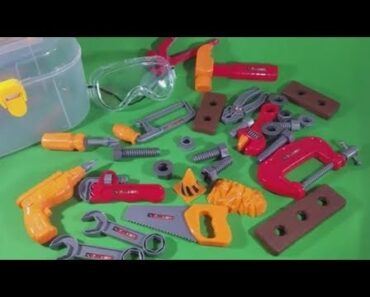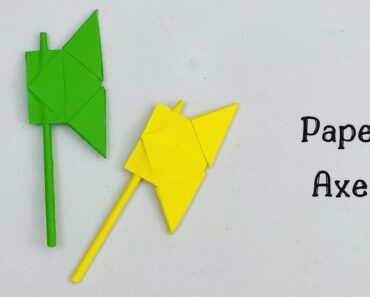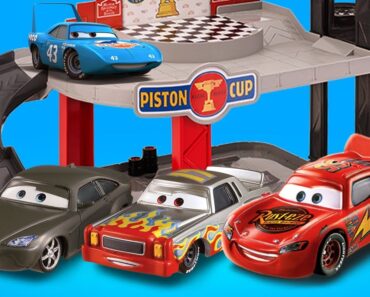An earthquake refers to the sudden shaking of the Earth’s lithosphere, the outermost layer consisting of the crust and the upper mantle. It arises when energy shock-waves called seismic waves pass through the solid rocks on the Earth’s crust.
Earthquakes can range from being very weak — they sometimes can’t be felt at all — to disastrous, leading to loss of lives, inflicting destruction across entire cities and towns, and displacing or disrupting the ground (1).
Read on as we answer important questions regarding earthquakes, tell you some safety measures to take, and present a few earthquake facts.
What Are Tectonic Plates And Faults?
Before we delve into how earthquakes are caused, it is important to understand tectonic plates and faults. The Earth’s crust, called the lithosphere, comprises 15 to 20 moving tectonic plates that rest on the hot, molten rock of the Earth’s mantle (2). The heat within the Earth’s interior causes the plates to move, sometimes toward and sometimes away from each other.
A zone of fracture between two blocks of rock is known as a fault. Fault lines are the cracks in the Earth’s crust where tectonic plates meet. Faults can range from a few millimeters to thousands of kilometers. During an earthquake, the rock on one side of the fault slips suddenly (3). The major types of faults include dip-slip normal, dip-slip reverse, strike-slip, and oblique-slip.
What Causes An Earthquake?
The continuous motion of the tectonic plates leads to the steady build-up of stress or pressure along the faults in the Earth’s crust. When the accumulated stress is suddenly released, it results in seismic waves that travel in all directions and causes the shaking of the Earth’s surface (4) (5) (6). Let’s learn about the four main types of earthquakes to understand the causes of earthquakes better.
- Tectonic earthquakes: This, as explained above, is the most common cause of earthquakes.
- Volcanic earthquakes: These are caused due to volcanic activities, such as the movement of magma, which lead to significant stress changes in the Earth’s crust. Volcanic earthquakes are not as devastating as tectonic earthquakes (7) (8).
- Induced earthquakes: These occur due to human activities, such as nuclear explosions, geothermal projects, tunnel constructions, oil extraction, and filling of water reservoirs, which add stress to the faults in the Earth’s crust (9). Fracking causes 33% of human-induced earthquakes, whereas mining and water reservoir impoundment account for 25% and 11% of these earthquakes, respectively (10).
- Collapse earthquakes: These are small earthquakes triggered by cave-ins and massive land slidings in the regions of caverns and mines due to the explosion of rocks on the Earth’s surface (11).
What Are Hypocenter And Epicenter?
The point of origin of an earthquake rupture within the Earth is called the hypocenter, also called the focus. It is the position where the seismic waves in the rocks are first released, marking the origin of the fault.
The point on the Earth’s surface or the ground directly above the hypocenter, where the earthquake originates, is called the epicenter. Locating the epicenter is important in determining the faults that rupture and cause an earthquake. If the fault is recognized, the hazard modeling of that area can be done more effectively (12).
What Are Aftershocks And Foreshocks?
The smaller earthquakes that follow the main earthquake in an area are called aftershocks. These occur following the first hours, days, weeks, or even months after the major earthquake and can cause further damage to the already weakened structures in towns or cities.
The foreshocks are earthquakes that occur before the main intense earthquake. These are comparatively less severe and might come as a warningsign of the major quake (13).
How Are Earthquakes Measured?
Earthquakes are measured using a seismograph, also called a seismometer, which monitors the seismic waves. It works on the principle of a pendulum and integrates a timing device and a recording device.
Initially, the Richter scale was used to measure the magnitude of an earthquake, but today, the moment magnitude scale (MMS) is used globally (14). The larger the value of MMS, the more severe the earthquake.
- At a value below 3 on the magnitude scale, one cannot feel an earthquake.
- At a value of 4 or 5 on the scale, your house might shake, and you may feel as though a large truck is passing close by. Some people may not notice this.
- At 6, things fall off, windows break, and houses might crack.
- At 7, buildings and other structures would collapse, and there would be many casualties.
- At 8 and above, whole areas near the epicenter can be totally destroyed.
Safety Measures To Take During An Earthquake
Here are some safety measures to follow before, during, and after an earthquake (15) (16).
1. Before an earthquake
- Have a disaster prevention plan to reduce the damage and injury caused by an earthquake.
- Improve the earthquake resilience of the house.
- Stockpile water and foodstuff.
- Participate in disaster training.
- Prepare a first aid kit.
2. During an earthquake
- Drop under something sturdy, such as a table, bed, or desk, cover your head and neck with your arms, and hold on to your shelter until the shaking stops.
- Stay indoors and away from windows.
- When on the road, move to an open area and away from buildings, powerlines, poles, bridges, and trees.
- Avoid areas of secondary hazards, such as landslides.
- If you are inside a train, grip the railing/ hand strip firmly.
- If you are at the seashore, seek high grounds.
- Turn on the radio for instructions and updates.
3. After an earthquake
- Check for injuries and damages, and secure escape routes.
- Prevent fires, shut off gas valves, and unplug electrical cords.
- Watch out for aftershocks.
- Make sure your family is safe, assist neighbors, and fend for yourself.
- Recover things and try to get back to normal.
What Is A Tsunami?
A series of large, destructive sea waves produced by an earthquake, landslide, or volcanic eruption on the seafloor are known as tsunamis. When these giant waves approach land and shallow water areas, they build up to higher and higher heights. The speed of a tsunami depends on the depth of the ocean rather than the distance from the source of the wave.
Tsunamis are not to be confused with tidal waves, which result from strong winds and the gravitational pull of the Earth, Moon, and Sun. Most tsunamis are triggered by earthquakes with a magnitude of 6.5 and above (17) (18) (19).
30 Fascinating Facts About Earthquakes For Kids
Here are some interesting facts about earthquakes (1) (6) (20) (21) (22) (23) (24) (25) (26) (27) (28).
- The 1960 Valdivia earthquake in Chile is the most powerful earthquake recorded in the world to date. It measured 9.6 on the Richter scale.
- The 1964 Alaskan earthquake of magnitude 9.2 is the most powerful earthquake ever recorded in the United States.
- Alaska and California are the most earthquake-prone states in the US.
- Japan, Indonesia, and China are some of the most earthquake-prone countries in the world.
- Most earthquakes occur at depths of less than 50 miles (80 kilometers) below the Earth’s surface.
- Earthquakes can happen as deep as 400 miles (644 kilometers) below the Earth’s surface.
- The Himalayas and the Andes were created due to the movement of the tectonic plates.
- Earthquakes can happen in any weather condition.
- Geologists cannot predict earthquakes, but they can determine the faults and warn you of a possible earthquake at a place in the future.
- The first pendulum seismoscope to measure the shaking of the ground during an earthquake was developed in 1751.
- That the faults were the source of earthquakes was recognized in 1885.
- Millions of earthquakes take place every year, but most go unnoticed.
- Approximately 80% of the world’s largest earthquakes occur in the Pacific Ocean, near Japan, at a place called the ‘Ring of Fire.’
- In ancient Greece, people believed that earthquakes happen when the sea god Poseidon gets angry. So, they nicknamed him the ‘Earth-Shaker.’
- Aristotle recognized as early as 350 BC that soft ground shakes more than hard rock during an earthquake.
- The deadliest earthquake recorded in human history is the 1556 earthquake in Shansi, China. It was estimated to have killed 830,000 people.
- The earliest recorded earthquake has been traced back to 1831 BC in the Shandong province of China.
- The Indian Ocean earthquake and tsunami in 2004 generated enough energy to power all the homes and businesses in the US for three days.
- An average earthquake lasts for around one minute.
- According to Japanese mythology, a giant catfish named Namazu is responsible for earthquakes.
- Earthquakes kill approximately 8,000 people each year.
- Parkfield, California, is known as “The Earthquake Capital of the World” and has a bridge that spans two tectonic plates.
- An earthquake is capable of releasing 100 times more powerful energy than the energy released by the atomic bomb dropped on Hiroshima in Japan in 1945.
- The 1811 New Madrid earthquake is known to have caused certain parts of the Mississipi River to flow backward.
- Canals and ponds may release strange smells before an earthquake.
- The 2004 Sumatra-Andaman earthquake in the Indian Ocean lasted for about 10 minutes, which is the longest ever recorded.
- The Northern Hemisphere records more earthquakes than the Southern Hemisphere.
- The world’s worst landslide triggered by an earthquake occurred in the Kansu Province of China in 1920. It killed about 200,000 people.
- Have you heard of the “Miracle Babies?” After the 1985 Mexico earthquake, almost all newborns in a collapsed hospital were rescued after seven days without food, water, or human company.
Now that you know how earthquakes happen and the precautions and safety measures to take, share your knowledge with people in your community. We hope we have answered most of your questions regarding earthquakes.

































